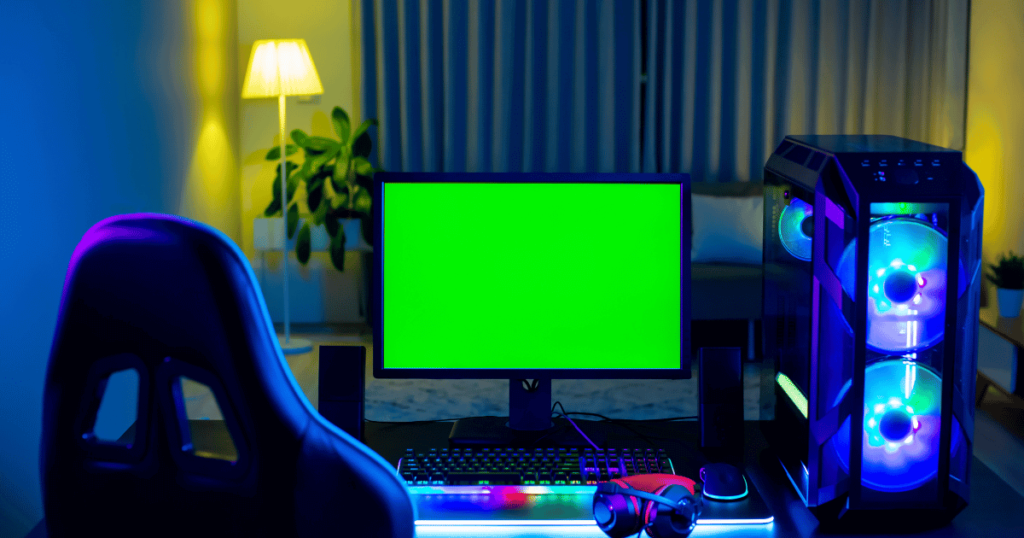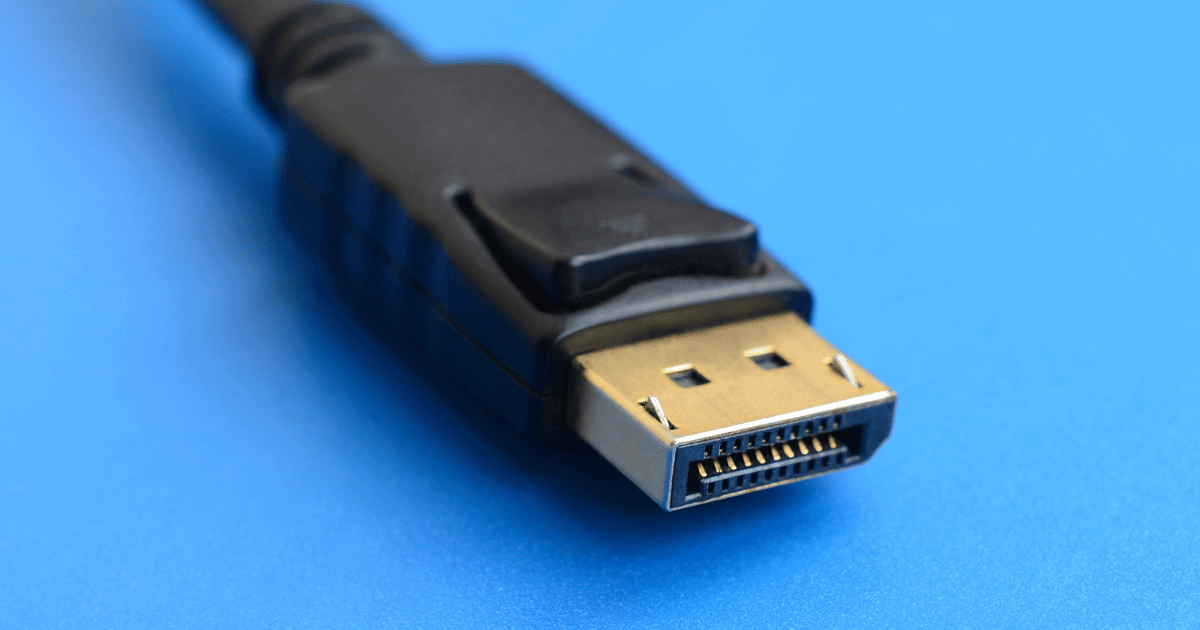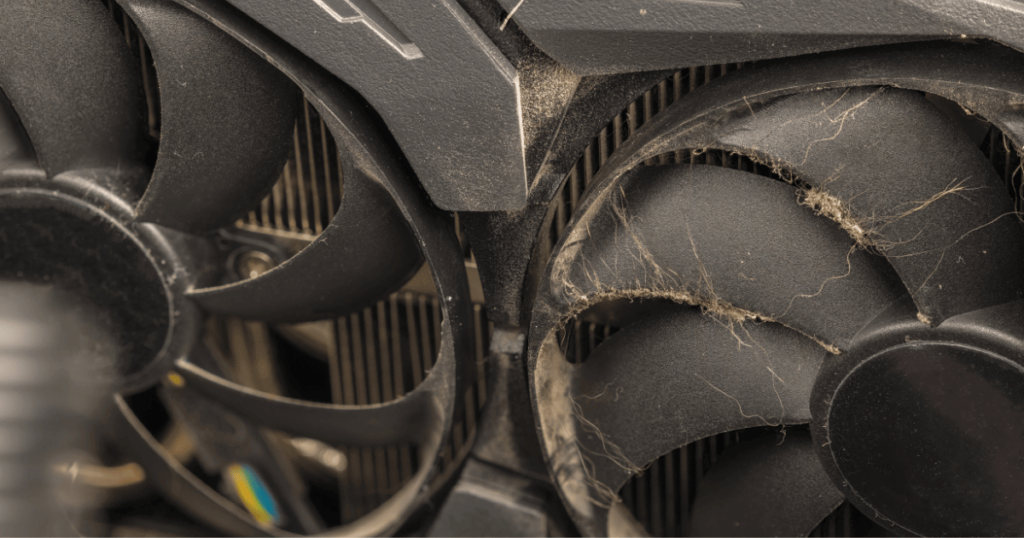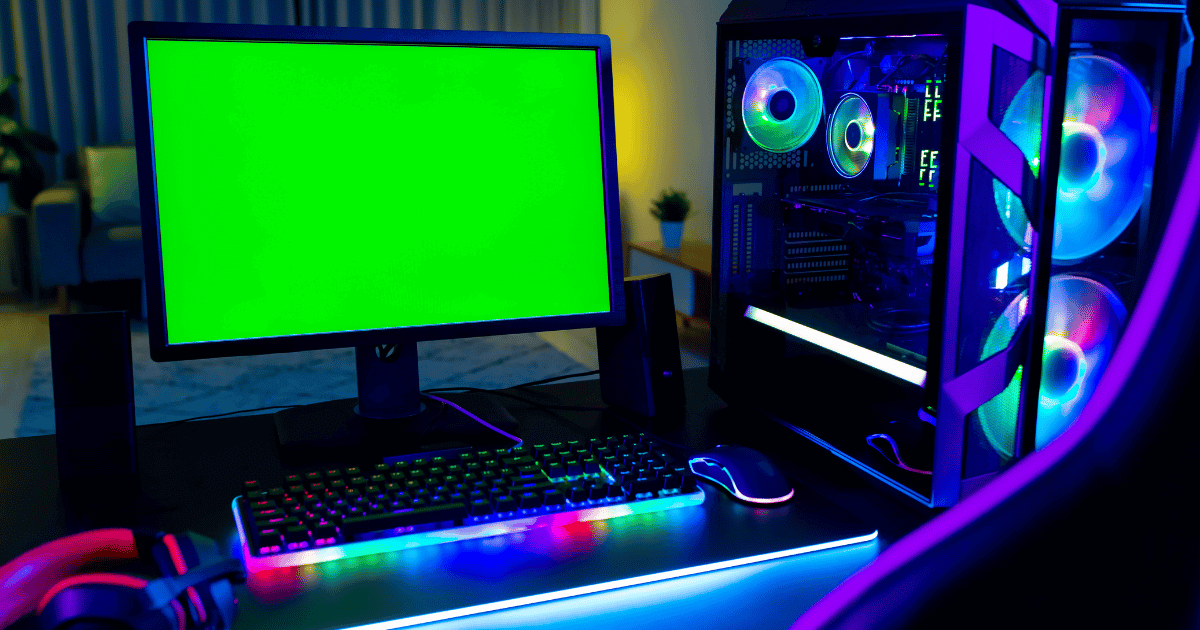Seeing your monitor suddenly flashing different colors is never a good sign. This issue not only prevents you from having a good experience but also raises immediate concerns about the health of your computer.
In this article, we’ll dive into the different causes of these color flashes, both the red, blue, and green, patterns as well as the distorted ones, offering clear explanations as well as practical solutions.
Without further ado, let’s get started!
Screen Flashing Colors One After the Other During Inactivity
Causes
This issue is often a built-in monitor feature, activated through its settings. It’s designed to prevent screen burn-in or as part of the monitor’s dynamic screensaver options. It might also be related to a setting that prompts the monitor to display colors when it doesn’t receive a signal.
Solutions
To fix this, access your monitor’s settings using its physical buttons. Look for screensaver or power-saving options. You may find a setting that’s causing the color cycle, which can be changed to a standard screensaver or to turn off the display after a certain period of inactivity.
If you’re having trouble navigating these settings, please refer to the manual for your monitor model.

Constant Screen Flashing
Causes
Sometimes, the flashing of colors happens continuously, not just during inactivity. This issue usually stems from your monitor displaying a test pattern.
Monitors use these patterns to check for dead or stuck pixels, ensuring the screen is functioning properly.
Unlike the color changes triggered by screensaver settings or power-saving modes, this pattern remains on the screen and doesn’t stop with user interactions. It’s an automatic diagnostic feature in many monitors, activated to verify the health of the display.
Solutions
If your monitor is stuck on this test pattern, performing a hard or factory reset often helps. The steps for this reset vary based on your monitor’s model.
Generally, you should unplug your monitor, then press and hold the power button for about 10-30 seconds. This action discharges any remaining electrical charge, which can reset the monitor’s settings back to their default state.
If you’re not sure about your monitor’s model or how to reset it, you can refer to our article about how to find your monitor model on Windows.
Loose Internal Connections
Causes
A common issue causing screen flashing is a loose internal cable. This problem can occur if the connections inside the monitor become dislodged or aren’t properly secured, disrupting the regular function and display of the screen.
Solutions
If your monitor is still under warranty and you suspect loose internal connections are to blame, it’s best to return it for repair or replacement. Opening the monitor yourself might void the warranty.
However, if your warranty has expired and you have experience with electronic repairs, you could cautiously open the monitor to check and secure any loose connections.
If you’re not confident in doing this, or if the issue persists, seeking professional help is advisable to avoid potential damage to the monitor or personal injury.
You may also like: How to Tell if Your Monitor is Dying
Graphics Card Not Properly Installed on the Motherboard

But what if the flashing on your screen isn’t the red, green, or blue we discussed above but rather distorted colors? Here’s what you need to do:
Causes
When the graphics card is not properly installed on the motherboard, or if the physical movement of the computer affects the GPU’s seating, one of the issues that it can lead to is screen flashing. This happens because the GPU, responsible for rendering images on your screen, isn’t securely connected, leading to display errors and inconsistencies.
Solutions
The first step is to correctly reinstall the GPU. Turn off and unplug your computer, then open the case. Carefully remove the GPU and reinsert it firmly into its slot, ensuring that it’s properly seated. Check for a secure fit, indicated by a click from the locking mechanism.
GPU Connection Troubles

Assuming your GPU is securely installed but you’re still facing random color flashes on your screen, it’s time to look at another potential culprit: the GPU connections, specifically the cables like HDMI or DisplayPort.
Causes
Loose or improperly connected cables can also cause screen flashing issues. The cable that connects your GPU to your monitor, whether it’s HDMI, DisplayPort, or another type, might not be fully or correctly plugged in. This incomplete connection can lead to intermittent signal loss, resulting in random color flashing on the screen.
Solutions
Start by checking and securing your GPU connections. Ensure that both ends of your cable – the one connected to the GPU and the one to the monitor – are firmly plugged in. Sometimes, unplugging and then re-plugging the cable can resolve connection issues.
If securing the cable doesn’t solve the problem, consider replacing it. For example, if you’re currently using an HDMI cable, try switching to a DisplayPort cable, or vice versa. It’s important to choose the right type of cable, especially if you have a high refresh rate monitor, like 144Hz.
Using the wrong cable type can limit your monitor’s performance, potentially restricting it to a lower refresh rate, such as 60Hz.
Dying Graphics Card

I’ve kept this section for last because it’s a less common issue compared to the others listed above and, frankly, it’s my worst nightmare when it comes to computer problems.
Causes
Over time, graphics cards can age and start to fail. This aging process can impact their performance and reliability.
One of the key issues with an aging GPU is overheating. Over the years, if the thermal paste on the GPU isn’t cleaned regularly, dust can build up causing the graphics card to overheat.
This overheating not only affects the GPU’s performance but can also cause it to display random color flashes or other visual anomalies as it struggles to render images properly.
Solutions
If you suspect that your graphics card might be dying, one way to test this is by trying another GPU, if you have access to one. Swapping out the graphics card can confirm whether the issue is with the GPU itself or another part of your system.
Additionally, monitoring your GPU’s temperature can provide valuable insights. Tools like CPUID HWMonitor or MSI Afterburner are great for this purpose. They can help you keep an eye on your graphics card’s temperature in real-time.
If you notice that the temperature is consistently high, it might be the culprit behind those distorted colors.
Conclusion
I hope this guide has helped you resolve the issue of your monitor flashing different colors. If you’ve managed to fix your screen, I’d love to hear about it!
Please feel free to drop a comment sharing which tip worked for you. Your experience might just be the helpful insight someone else needs.
We're an affiliate
We hope you love the products we recommend! Just so you know, gameraround.com is a participant in the Amazon Services LLC Associates Program, an affiliate advertising program designed to provide a means for sites to earn advertising fees by linking to Amazon.com.

